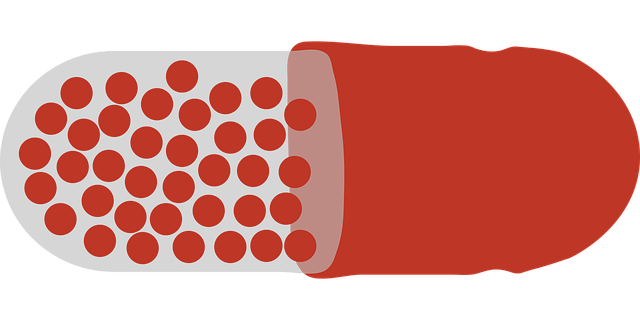Post-Traumatic Stress Disorder (PTSD) is a mental health condition triggered by trauma, impacting daily life. Early recognition and holistic approaches are key for effective management. Traditional treatments combine medication and therapy like SSRIs and CBT, but holistic therapies focus on the mind-body-spirit connection, including mindfulness, yoga, massage, art, music, exercise, and natural remedies. These complementary methods address root causes, reduce symptoms, foster resilience, and promote personal growth, providing hope and healing for affected individuals.
Post-Traumatic Stress Disorder (PTSD) is a complex condition affecting millions globally. Beyond traditional medication and therapy, holistic therapies offer a promising complement to PTSD treatment. This article explores various natural approaches, from mindfulness and meditation to yoga, art therapy, and lifestyle changes. We delve into the science behind these practices, provide real-world case studies, and equip readers with comprehensive insights into effective PTSD management beyond conventional methods. Discover how holistic therapies can help heal mind, body, and spirit.
Understanding Post-Traumatic Stress Disorder (PTSD): Symptoms and Causes

Post-Traumatic Stress Disorder (PTSD) is a mental health condition that can develop after exposure to traumatic events, such as military combat, accidents, natural disasters, or violent attacks. It’s characterized by distressing thoughts and feelings that recur and are related to the event, avoiding reminders of the trauma, and heightened reactivity to triggers associated with the traumatic experience. The symptoms can significantly impact daily functioning and quality of life.
The causes of PTSD are multifaceted. It often arises from a person’s inability to process and cope with an overwhelming traumatic event. This can be due to factors like the intensity and duration of the trauma, lack of social support, or insufficient access to effective PTSD treatment. Recognizing the signs early is crucial for successful management. Effective PTSD treatment involves addressing these symptoms through various holistic therapies, which we will explore in detail, offering hope and healing for those affected by this condition.
Traditional Approaches to PTSD Treatment: Medication and Therapy

Traditional approaches to PTSD treatment often involve a combination of medication and therapy. Selective serotonin reuptake inhibitors (SSRIs) and other antidepressants are commonly prescribed to manage symptoms like anxiety, depression, and recurrent intrusive thoughts associated with PTSD. These medications work by balancing neurotransmitters in the brain, helping to stabilize mood and reduce emotional distress.
Cognitive-behavioral therapy (CBT), eye movement desensitization and reprocessing (EMDR), and trauma-focused psychological treatments are among the therapeutic options. CBT helps individuals challenge negative thoughts and behaviors related to their traumatic experiences. EMDR facilitates the processing of traumatic memories, while trauma-focused therapies aim to help patients understand and cope with the underlying causes of their PTSD symptoms. These traditional methods have shown effectiveness in managing PTSD, but they often only address symptoms and may not fully address the complex nature of the disorder.
The Rise of Holistic Therapies: A Complementary Approach

In recent years, holistic therapies have emerged as a popular and effective complement to traditional PTSD treatment. This shift reflects a growing understanding that mental health is deeply interconnected with physical, emotional, and spiritual well-being. Unlike conventional approaches that often focus solely on symptoms, holistic therapies aim to address the root causes of PTSD by nurturing the whole individual.
By integrating various techniques such as mindfulness meditation, yoga, massage therapy, and nature-based interventions, these therapeutic methods offer a multifaceted approach to healing. Such an inclusive strategy not only aids in managing PTSD symptoms but also fosters resilience, enhances coping mechanisms, and promotes overall personal growth. This complementary approach is gaining traction among both healthcare professionals and individuals seeking alternative or additional support for their PTSD treatment.
Mindfulness and Meditation for Calming the Mind

Mindfulness and meditation have emerged as powerful tools in the holistic treatment of PTSD, offering individuals a way to calm their minds and regain control over their thoughts. These practices encourage individuals to focus on the present moment, observing their feelings and sensations without judgment. By cultivating awareness, individuals can learn to recognize when they’re being triggered and respond rather than reacting automatically.
Regular meditation can help reduce symptoms of PTSD such as anxiety and depression, promote better sleep, and enhance overall emotional well-being. It allows individuals to develop a deeper sense of self-compassion and resilience, crucial for managing the intense emotions often associated with traumatic memories. This calming approach to mental health support empowers those affected by PTSD to navigate their healing journey with greater tranquility and self-control.
Yoga and Bodywork: Connecting Body and Spirit

Yoga and bodywork are holistic therapies that offer a unique approach to PTSD treatment, focusing on the profound connection between the mind, body, and spirit. Through gentle movements, breathwork, and mindfulness, yoga helps individuals cultivate awareness of their physical sensations and emotional responses, fostering a sense of grounding and calm. This practice can be particularly beneficial for managing symptoms like anxiety, insomnia, and flashbacks that often accompany PTSD.
Bodywork techniques, such as massage therapy or somatic healing, further enhance this holistic experience by releasing physical tension stored in the body from traumatic experiences. By bringing attention to bodily sensations, these practices encourage individuals to process and release suppressed emotions, promoting a deeper sense of healing and restoration. Combining yoga and bodywork can create a transformative journey for those seeking non-traditional PTSD treatment methods.
Art, Music, and Creative Therapies: Unlocking Emotional Expression

Art, music, and creative therapies offer unique and powerful approaches to PTSD treatment. These modalities allow individuals to express their emotions in ways that traditional talk therapy might not always achieve. By engaging in artistic processes, patients can tap into their subconscious, process traumatic memories, and release repressed feelings. For example, painting or drawing can provide a means of visual representation for complex emotional states, enabling individuals to externalize and make sense of their experiences.
Music therapy, likewise, offers a rhythmic and melodic avenue for emotional expression. Playing instruments, singing, or simply listening to music can evoke powerful memories and trigger the release of hormones that regulate mood and stress. These creative outlets are especially beneficial for those who find it challenging to verbalize their emotions. Through art and music, individuals with PTSD can access and begin to heal their inner selves in a safe and supportive environment.
Natural Remedies and Lifestyle Changes for PTSD Management

Many individuals living with Post-Traumatic Stress Disorder (PTSD) are turning to natural remedies and lifestyle changes as complementary approaches to their PTSD treatment. These holistic therapies offer a multifaceted approach to managing symptoms, focusing on both the mind and body’s interconnectedness. Lifestyle modifications such as regular exercise, mindfulness practices like meditation, and dietary adjustments can significantly impact an individual’s overall well-being. For instance, physical activity releases endorphins, which can reduce stress and anxiety levels, while also improving sleep quality—a common challenge for PTSD sufferers.
Additionally, natural remedies like essential oils, herbal supplements, and acupuncture have gained traction in PTSD management. Aromatherapy with calming scents may help alleviate symptoms of anxiety and depression, whereas specific herbs are believed to enhance relaxation and cognitive function. Acupuncture, an ancient practice, is thought to stimulate the release of endorphins and promote emotional balance. These natural approaches can be powerful tools when combined with traditional therapy methods, offering a more holistic and personalized treatment plan for PTSD.
Case Studies: Success Stories of Holistic PTSD Treatment

In the realm of PTSD treatment, holistic approaches have emerged as powerful tools, offering a symphony of healing for those affected by traumatic events. Case studies across various platforms highlight success stories where individuals found solace and recovery through these alternative methods. For instance, many veterans who sought PTSD treatment in clinical settings discovered that incorporating yoga, meditation, and art therapy into their regimen significantly improved their mental health. These therapies provided them with effective coping mechanisms, enabling them to navigate the challenging symptoms associated with PTSD.
Additionally, numerous civilians who suffered from complex trauma have shared their transformative experiences. Through practices like mindfulness walking and nature therapy, they learned to reconnect with their senses and gain a sense of grounding. This holistic approach not only reduced the intensity of flashbacks and nightmares but also fostered a deeper sense of resilience and self-awareness. Such success stories underscore the potential of holistic PTSD treatment in offering lasting relief and improved quality of life for those navigating this challenging condition.
